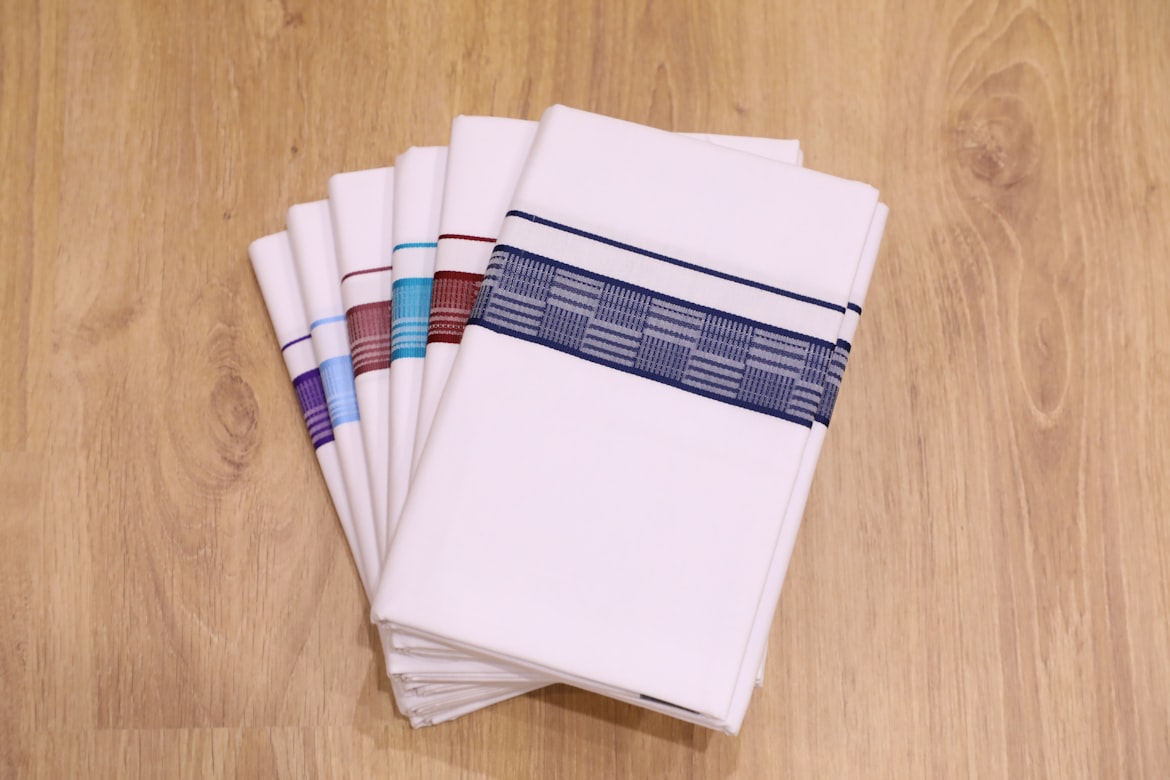Are you curious about the history of traditional Indian clothing? Do you want to know how this style has evolved over time? If so, then this blog post is for you. We’ll take a look at how Indian traditional clothing has gone from the past to present – and what it looks like today!
Introduction
Indian traditional clothing has been evolving since its inception in the Indus Valley Civilization. The Pre-Vedic, Vedic and Post-Vedic periods have seen the development of distinct garments and fabrics, each with its own history and cultural significance. During the colonial period, Indian fashion was heavily influenced by foreign designers and brands. The traditional clothes of India have been shaped by multiple religions, local customs, rituals, and dance performances. The fabrics commonly used for making these garments are cotton, silk, chiffon, georgette, and muslin. In modern times, the fashion industry of India has experienced immense growth with a new wave of stylish yet traditional clothes that cater to people’s individual tastes.
Pre-Vedic Period
The Pre-Vedic period (3000 BCE – 1500 BCE) saw the emergence of clothing in the Indian subcontinent. Evidence of clothing in this period can be traced back to the Indus Valley civilization. People from this era mainly wore clothing made from locally grown cotton, as well as fabrics like wool, jute and silk. They also wore animal skins and fur for protection from the elements. Interesting mixtures of foreign and indigenous materials were used to create a variety of garments. These included antariya (loincloth), uttariya (shawl) and kayabandh (waistband). Beads were also used for embellishment, which were usually hollow and made of clay or stone. During this period, saris, turbans and dhotis were worn draped around the body in various ways. This Pre-Vedic period laid the foundation for the development of traditional Indian clothing in the centuries to come.
Vedic Period
During the Vedic period, the clothing of people in India developed further. For women, sarees were the easiest pieces of attire to wear. Blouses (cholis) were also introduced at this time. The saree was a long stretch of cloth that was wrapped around the body and pinned with a brooch. People from affluent and noble families would often adorn their clothing with intricate embroidery and dyeing in order to show their wealth and status. In addition, Aryans brought horse chariot racing to India, which further developed their clothing styles. While some women wore cloth draped around them in a similar manner as Iranian or Greek women, others opted for more complex outfits such as sari-choli-kurta combinations. These combinations were often adorned with jewelry, embroidery and other embellishments. This was the beginning of the development of the traditional clothing of India.
Post-Vedic Period
In the Post-Vedic period, many dynasties came and ruled like Mauryas, Sungas, Guptas and Kushans. This period marked the emergence of new fabrics like wool, silk, cotton, jute, linen, and muslin which were used in clothing. People from the rich and affluent sections of society could afford more luxurious fabrics and intricate designs. The three articles of clothing – antariya, uttariya, and kayabandh – were widely used with interesting mixtures of foreign and indigenous elements. The 11th Century BC Rig Veda states the existence of Paridhan (dyed) and Pesas (embroidered) garments and traces the development of refined styles of clothing. A new version of sari called ‘Choli’ or blouse was introduced in the later Vedic period with sleeves and a neck. Beads were also used as adornments on clothes. The rich fabrics and intricate designs seen during this period laid the foundation for modern Indian fashion.
Colonialism and Indian Fashion

With the arrival of the East India Company, the Anglo fashion of skirts, trousers and blouses was introduced to India. This was further developed and refined by the British sahibs and memsahibs. Women’s fashion included sarees, ghagras, floor-length Indian dresses that were redone in net and georgette, denim and dresses. The fabrics used in traditional clothing ranged from wool, silk, cotton, jute, linen and muslin to synthetic fabrics. The British Raj had a huge influence on Indian clothing and fashion in terms of style, fabric and colour.
Historical Clothing of India
Historical Clothing of India has evolved over time, from the pre-Vedic period to the Colonial era. The Rig Veda states the existence of Paridhan (dyed) and Pesas (embroidered) garments and traces the development of refined fabrics during the Vedic period. Post-Vedic era saw many dynasties come and rule such as the Mauryas, Sungas, Guptas and Kushans. Fabrics such as wool, silk, cotton, jute, linen, and muslin were commonly used. During the colonial period, the East India Company brought with it Anglo fashion of skirts, trousers, and blouses which were enforced upon its employees. The most popular form of clothing was the Sari or Ghagri that was worn by women since ancient times. Fabrics were primarily woven from cotton which was cultivated in most parts of the subcontinent while silk came primarily from Eastern Himalayas. Today, Indian fashion has come a long way and continues to make strides in the global fashion industry.
Traditional Clothing in Ancient India
In ancient India, clothing was mainly made from locally grown cotton during the Indus Valley Civilization. People from the rich and affluent classes wore more elaborate and expensive garments, such as Paridhan (dyed) and Pesas (embroidered). The three articles of clothing, the antariya, uttariya, and kayabandh were widely used. With the rise of Buddhism and Jainism, people started to sometimes wear trousers with long tunics over them. As time passed, Indians have mainly worn clothing made up of locally grown cotton. India was the one of the first places where cotton was cultivated and used even as early as 5th Millenium BC. The 11th Century B.C Rig Veda states the existence of Paridhan (dyed) and Pesas (embroidered) garments and traces the development of refined fashion in India. Thus, Ancient Indian clothing became medieval Indian clothing. An introduction to the complexities of clothing in ancient India could nurture new perspectives of Indian history and society.
Types of Indian Traditional Clothing
There are several types of traditional clothing in India, from the Sari or Ghagri, which was worn by women, to achkans, lungis, and kaupinas worn by men. The Rig Veda mentions the use of Paridhan (dyed) and Pesas (embroidered) fabrics during the Vedic period. During this time, fabrics such as silk, wool, cotton, jute, linen and muslin were also popularly used. Traditional Indian clothing has seen a revival in recent times with the rise of modern Indian fashion industry. Many popular designers have incorporated traditional styles into their designs while keeping up with the trends of the contemporary world.
Fabrics Commonly Used in Indian Traditional Clothing

In India, traditional clothing has evolved over the centuries and many different fabrics have been used for making garments. Cotton, silk and wool are among the most common fabrics found in traditional Indian clothing. Cotton is known for its lightweight and breathable nature, making it ideal for hot weather climates. Silk is typically used to make luxurious and elegant garments such as saris, while wool is often used to make thick, warm winter garments. Synthetic fabrics are also increasingly popular in modern Indian fashion, due to their durability, affordability and range of styles available. All of these fabrics come together to create the beautiful and diverse range of traditional Indian clothing that can be seen today.
Modern Indian Fashion Industry
The modern Indian fashion industry has experienced a significant transformation since its inception in the 1960s. With the advent of the internet, TV, and other forms of media, Indian fashion has become more accessible to people all over the world. As a result, jeans, pants, t-shirts, shorts and other western apparel have become common in Indian fashion markets. Boutiques have also cropped up in cities like Mumbai, Delhi, Chennai and other metropolitan and big cities of India to support the growing demand for these western-style clothes. Bollywood has also been a major influence in popularizing western styles and trends in India. The influence of Bollywood can be seen everywhere from the latest trends in clothing to hairstyles and makeup. All these factors have helped shape the modern Indian fashion industry into what it is today.
Conclusion
In conclusion, Indian clothing has evolved over the centuries, from simple garments to elaborate and intricate designs. From the pre-Vedic period to the present day, clothing has always held a significant place in Indian culture. The fabrics and designs used in traditional clothing were often associated with religion, ritual and dance performances. With the influence of Western culture, many changes made a foray in the Indian fashion scenario. However, traditional clothing still holds a special place in many people’s hearts and continues to be popular today. The modern Indian fashion industry is booming and has become an important contributor to the country’s economy. From sarees to salwars and kurtas, there is a myriad of traditional clothing styles for people to choose from that reflect their unique cultural heritage.





